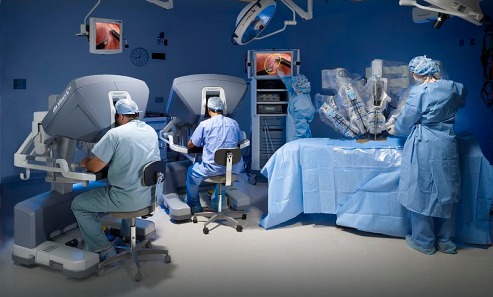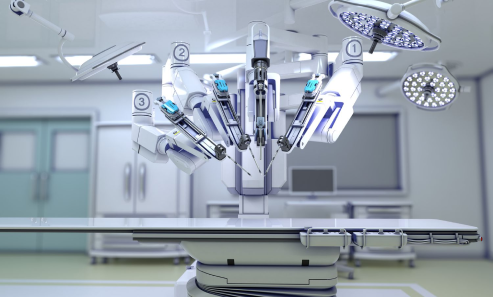




Robotic joint replacement is a surgical technique that combines the expertise of orthopaedic surgeons with robotic technology to perform joint replacement procedures. The robotic system assists the surgeon in executing the procedure with greater precision, enhancing the accuracy and reliability of the surgical outcomes.
By utilising robotic assistance, surgeons can plan and execute each step of the joint replacement surgery with meticulous detail, ensuring optimal implant positioning and alignment. This leads to improved longevity of the joint replacement and better functional outcomes for patients.
Robotic joint replacement can be performed on various joints in the body, with the most common procedures being knee, hip, and shoulder replacements.

The robotic system aids in optimising the implant fit and alignment, resulting in improved stability and natural movement.

Robotic technology assists in precise placement of the hip socket and accurate positioning of the femoral stem.

The robotic system aids in optimal positioning of the glenoid and humeral components, leading to improved range of motion and stability.
Conditions that may require robotic joint replacement often manifest through specific symptoms. These symptoms can vary depending on the joint involved but commonly include:
Several risk factors increase the likelihood of developing conditions that may require robotic joint replacement. These risk factors include:
Advanced age: Joint degeneration becomes more common with ageing.
Obesity: Excess weight places added stress on the joints.
Previous joint injuries: Past traumas can lead to joint damage and degeneration.
Genetic predisposition: Some individuals are genetically more susceptible to joint conditions
Medical conditions: Rheumatoid arthritis, osteoarthritis, and other inflammatory diseases can contribute to joint degeneration.

Identifying these risk factors can help individuals take proactive measures to maintain joint health and seek timely medical intervention when needed.
Conditions requiring robotic joint replacement often have underlying causes such as:
While certain conditions that require robotic joint replacement may be unavoidable, there are steps individuals can take to minimise their risk.

Engaging in low-impact exercises that strengthen the muscles surrounding the joints, improve flexibility, and promote joint lubrication.

Consuming foods rich in omega-3 fatty acids, antioxidants, and vitamins to support joint health.

Maintaining a healthy weight to reduce the stress on the joints.

Avoiding repetitive stress or impact injuries by using proper body mechanics during physical activities.
By adopting these preventive measures, individuals can lower their chances of developing joint conditions that may require robotic joint replacement.
Renal transplant involves several stages, each of which is crucial for a successful outcome. These stages include:

The robotic joint replacement procedure typically consists of several stages:

Thorough evaluation of the patient's medical history and physical condition.
Imaging studies (such as CT or MRI scans) to assess the joint's condition.
Blood tests and other diagnostic procedures to evaluate the patient's overall health and identify any potential risks.

Utilisation of advanced imaging scans to create a detailed 3D model of the joint.
Creation of a personalised surgical plan, including implant size selection and optimal positioning for the robotic assistance.

Administration of general or regional anaesthesia to ensure patient comfort.
Small incisions made to access the joint.
Robotic instruments inserted to aid the surgeon in precise bone preparation, removal of damaged tissue, and accurate implant placement.
Real-time feedback and guidance from the robotic system to ensure optimal implant alignment and soft tissue balance.

Close monitoring of the patient in the recovery area before transfer to a hospital room.
Implementation of pain management strategies, including medications and non-pharmacological approaches.
Physical therapy and early mobilisation to optimise healing, restore joint function, and prevent complications.
Length of hospital stay may vary depending on the joint replaced and individual factors.
At CritiCare Asia Hospitals, our expert medical professionals work closely with patients to figure out the most suitable treatment options based on individual needs and goals.
The recovery period following robotic joint replacement is crucial for the success of the procedure. The patient will work closely with a multidisciplinary team, including physical therapists and occupational therapists, to optimise healing, regain strength and mobility, and minimise postoperative complications.
By adhering to the prescribed rehabilitation plan and actively participating in the recovery process, most patients can gradually resume their normal activities and enjoy a significantly improved quality of life.